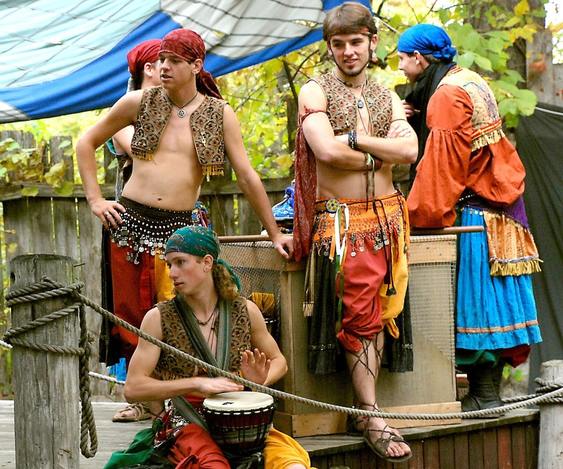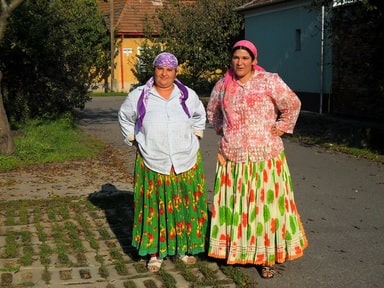Gypsies, also known as the Romani or Roma people, are a people who hail from Central Asia, specifically from the Indian subcontinent. Their nomadic nature has allowed them to disperse throughout much of Europe, Asia, and even America throughout the centuries.
However, despite this, they maintain a culture extensive enough for people to wonder who are gypsies in the first place. They also have a robust language despite assimilating to local cultures. To this day, there are around 3.5 million Romani speakers distributed across the world.
Sadly, however, the history of the Gypsies is also filled with centuries of persecution. In fact, the term “Gypsy” is often colloquial and considered a slur on their part. Thus, to properly understand who are Gypsies, we must also delve into the darker side of history in order to gain a fuller appreciation for their collective identity.
In this article, therefore, you can expect the following questions to be answered:
- What is a Gypsy?
- Who are Gypsies in history?
- What are Gypsies known for?
- Where are they now?
Migratory Origins and Population Distribution
The Romani people are native to the northern Indian hinterlands. According to various experts, their migrations were gradual and slow. They had slowly trickled into Europe as early as 1,500 years ago. Beginning in the first millennium, they had already established a presence within Persia (modern day Iran).
Around the 1300s, they had started to firmly establish themselves as a presence within the European Balkans. By the 1400s, they started to populate all of Western Europe. 500 years after that, they had already crossed the Atlantic Ocean and established a presence in the Americas.
This migration became even more feverish in the early 20th century, when the two World Wars erupted. This was especially true during the Second World War, when Nazi Germany implemented genocidal programs that tried to snuff out people who are Gypsies. These policies saw the deaths of 250,000 and 500,000 Romani.
Due to their migratory nature and fear of discrimination, establishing a census on them has proven difficult. The European Commission, however, has declared that there are 10 to 12 million Romani people living in Europe. Their population in America also numbers in the millions.
History of the “Gypsy” Moniker
During their migration into Europe, they were identified for their noticeably darker skin. Accordingly, this gave rise to the misconception that they came from the desert lands of Egypt. As early as the Medieval Ages, they were known as gypcian— shorthand for “Egypcien.” This ended up being shortened further into “gypsy.”
In recent times, there is widespread consensus that their given moniker is a slur that invites racism and discrimination. As a result, some of them would refuse to identify themselves as Romani altogether. Despite this, however, some Romani would openly allow and even identify themselves personally as “Gypsy.”
Traditions and Beliefs
Gypsy beliefs are often the highlight of anthropological research. Despite the fact that they have been dispersed for centuries, they still maintain strong cultural ties. If this is the case, then, one must ask once more: who are Gypsies? What traditions bind them so well?
Here are some of their core beliefs and traits:
#1: A strong family unit
The first manifestation of this structure is in their family. The father plays the worker role, laboring each day in order to feed the family. They are the breadwinners, and they are often engaged in martial arts such as boxing. This emphasis in physical prowess serves to cement the Romani identity.
On the other hand, the mother is expected to raise children, cook within the house and generally assist in internal matters within the family. Ultimately, the mother serves as the glue that keeps the household together. According to Gypsy traditions and superstitions alike, the more the merrier as each child brings more fortune.
It is also not uncommon for marriages to be arranged within a Gypsy family. Just like most arranged marriages, it is usually done for economic reasons. However, it could also be because doing so allows for the preservation of the Gypsy culture. Marrying within their enclosed communities helps to ensure this. Dowries are also demanded.
#2: Hierarchy and religious diversity
On a communal scale, each family is also subject to a higher hierarchy. The most senior of their system is the chieftain. He serves as the traditional arm of the community and helps make decisions for his bands. Likewise, a group of elders also helps him in his decision-making process for the community.
There is also a senior woman who gives representation to the women and children of the entire band. This hierarchy is also capable of administering punishment to violators within the community. The minimum one can expect is disgrace, while the maximum is outright ejection from the band.
Due in part to cultural assimilation, what and who are Gypsies have also evolved over time. They do not have any single religion to their name. However, the dominant religions within their groups are Hinduism and Buddhism. Some also entertain Christianity and Islam in equal measure.
#3: A robust musical tradition
Part of what makes Gypsy culture unique and interesting lies in their musical prowess. It is actually a known tradition for them to huddle together and have at least one person sing. This is because for them, singing produces a much deeper connection within the communal unit.
For gatherings, Gypsies will often sing any song that best represents the start, middle, and even the end of the festivities. In this scenario, they would either have the same singer or even separate singers within the family. Alternatively, they might all huddle and form a consensus on one song.
Aside from gatherings, however, they are also talented, public musicians. Their influence within various genres such as rock and even jazz has ended up illuminating popular culture. Various musicians which have been influenced by them include Franz Schubert and Ludwig van Beethoven.
#4: Cultural integration

In many ways, the Romani people are culturally versatile. They have more than one thousand years of cultural integration within their history. They adopt the dominant religions of the countries they migrate to and even learn the language generationally. The more a Romani stays within another country, the more they integrate the culture.
Admittedly, however, this is also a huge part of why calculating their population is difficult. They are often so ready to integrate within the local culture that they do not think being recognized as Romani is a big deal. Some Roma don’t even know they’re Gypsies until they dig up their family tree.
Make no mistake, however. While the Gypsies are cultural sponges, they still have a firm sense of identity. This has allowed them to assert their culture and even political rights on the world stage. Through their persistence, they were able to gradually make the European Union renounce racism against the Romani people.
#5: Neighborliness and Hospitality
Hospitality is integral to Gypsy culture. Often, Romani people are expected to be generous when it comes to visitors. In their ability to offer a healthy selection of foods, they show their social status and fortify their ability to network themselves to other people.
This inevitably builds social capital. For their part, leaving the right impression to a stranger or friend means that they can count on their help if something bad happens. In other words, they rely upon a principle of reciprocity to ensure that they will have someone to cover for them.
Famous Gypsy Figures
Who actually are Gypsies? How and what did they contribute to the world’s zeitgeist?
The answers to these questions are far closer than one might think. So well have they integrated and assimilated into their local cultures that we’ve seen lots of Romani go right past us in the history books. Some of the names below might actually already be familiar to you:
#1: Pablo Picasso
Born in Spain on the 25th of October, 1881, Pablo Picasso is a celebrated figure in the humanities. Though often overlooked, Pablo Picasso’s heritage was a source of great pride for one of history’s most gifted painters. He was one of cubism’s foremost proponents and a prolific artist with over 6,000 works of art to his name.
Due to his massive cultural influence, he has likewise become a popular figure in Indian culture. According to the Indian Council for Cultural Relations (ICCR), Pablo Picasso’s ancestry could be traced to his Indian roots almost 2,500 years prior. He died on April 8, 1973.
#2: Charlie Chaplin

One of history’s most celebrated comedians, the great Charlie Chaplin was born on April 16, 1889. According to a letter by a man named Jack Hill, Chaplin’s mother was a Gypsy queen who belonged to a travelling caravan. He was born in Black Patch, Birmingham and may have kept his Roma roots a secret to prevent persecution.
Before his death on December 25, 1977, he was able to make a series of works that would cement his legacy. From his silent films to his famous role in The Great Dictator, he has shown himself to be one of the most creative and politically-charged comedians of his time.
#3: Rosario Flores
A venerated singer, Rosario Flores was born in Madrid, Spain on November 4, 1963. She grew up surrounded by revered Gypsy performers and inherited much of their artistic talents. Rosario is the daughter of Lola Flores– a famed Spanish popstar in her day, and Antonio Gonzalez.
She is also known for her albums Muchas Flores and De Mil Colores. Sold in 2002 and 2004 respectively, her works ended up making her a two-time Latin Grammy Award winner. She has also been nominated for the same award several times after making other albums such as Parte de Mi and Rosario.

